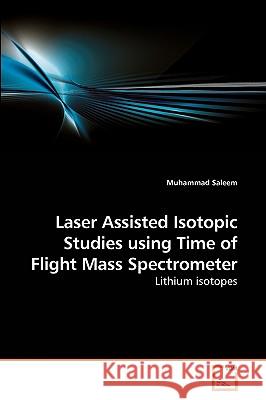Laser Assisted Isotopic Studies using Time of Flight Mass Spectrometer » książka
Laser Assisted Isotopic Studies using Time of Flight Mass Spectrometer
ISBN-13: 9783639254389 / Angielski / Miękka / 2010 / 92 str.
Laser isotope separation promised a popular method for the enrichment of the isotope of interest, owing to its high selectivity and low cost. The line width of the exciter laser determines the selectivity of an isotope of interest using multi step photoionization. The technique, therefore, requires an ultra narrow line width exciting laser because of the small isotopic shift. In this work, we have demonstrated a new experimental approach with which we can resolve the very close lying energy levels even if they have not been selectively excited. This technique is a combination of a well-collimated atomic beam source, a linear Time of Flight (TOF) mass spectrometer and dye lasers. It also made possible the simultaneous measurement of photoionization cross section of the excited states of the isotopes and their corresponding number densities even if they have not been selectively excited. The experimental work contained in this book may helpful in the fusion research program.
Laser isotope separation promised a popular method for the enrichment of the isotope of interest, owing to its high selectivity and low cost. The line width of the exciter laser determines the selectivity of an isotope of interest using multi step photoionization. The technique, therefore, requires an ultra narrow line width exciting laser because of the small isotopic shift. In this work, we have demonstrated a new experimental approach with which we can resolve the very close lying energy levels even if they have not been selectively excited. This technique is a combination of a well-collimated atomic beam source, a linear Time of Flight (TOF) mass spectrometer and dye lasers. It also made possible the simultaneous measurement of photoionization cross section of the excited states of the isotopes and their corresponding number densities even if they have not been selectively excited. The experimental work contained in this book may helpful in the fusion research program.











